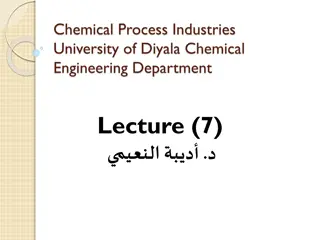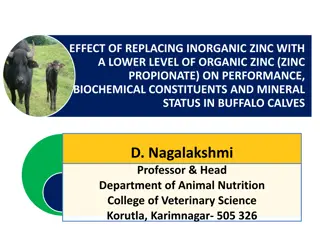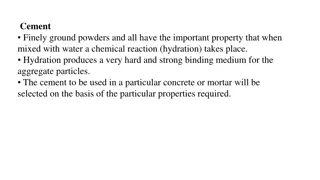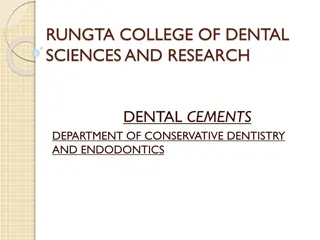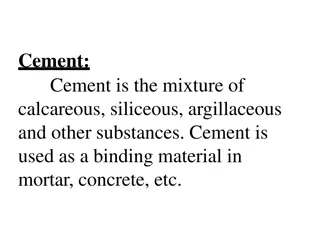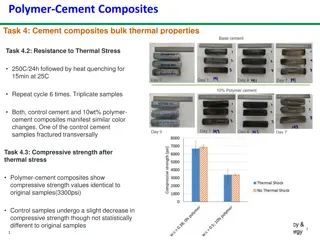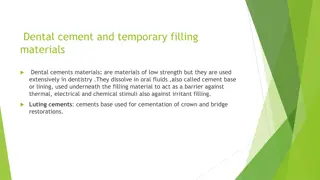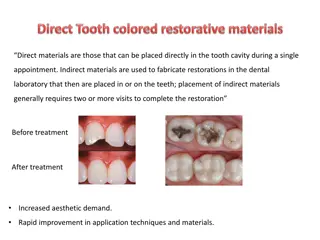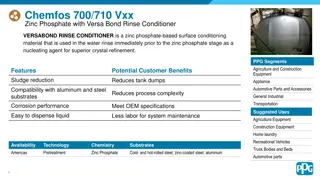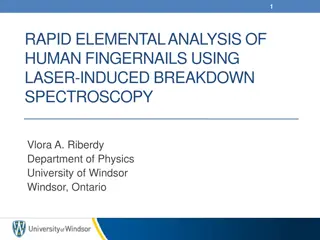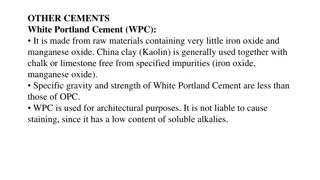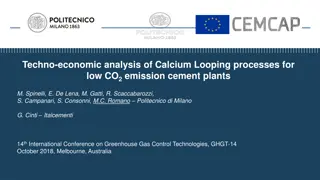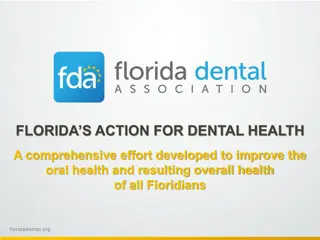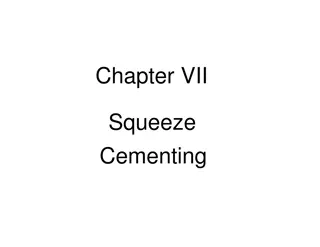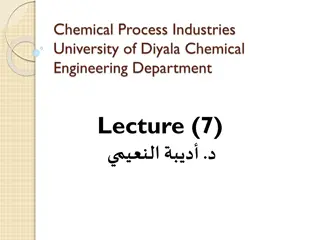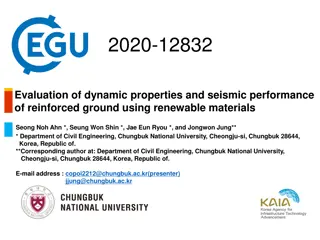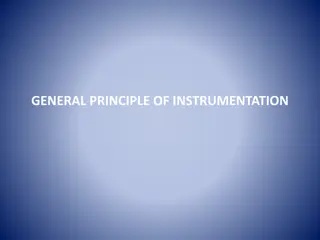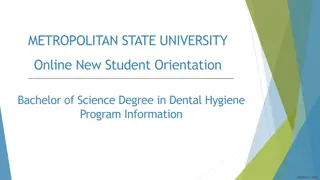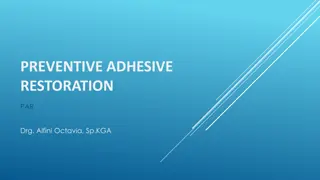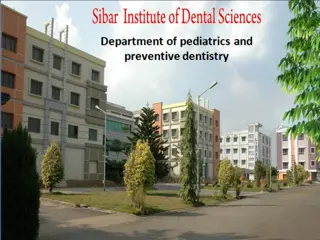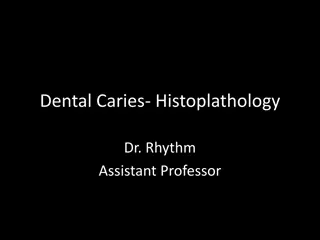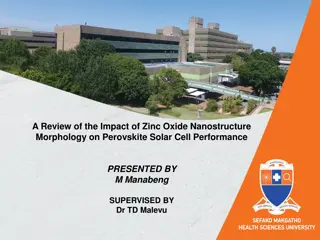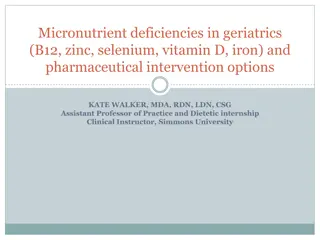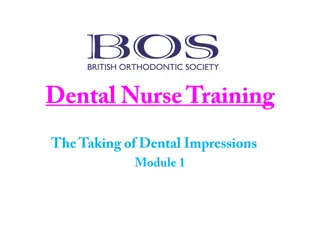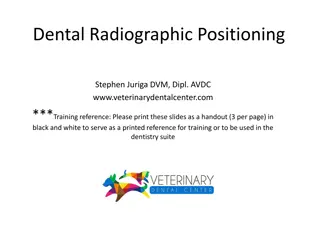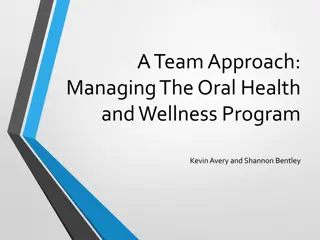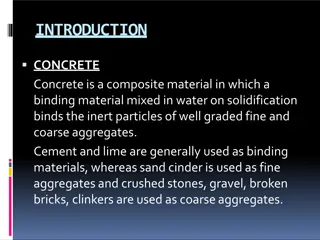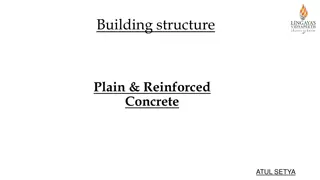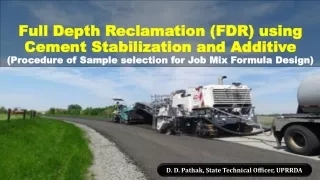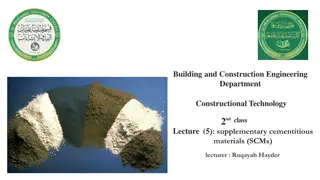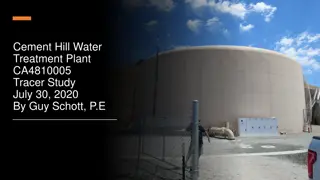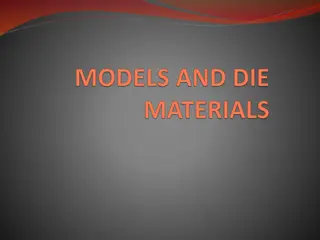Understanding Zinc Polycarboxylate Cement in Dental Sciences
Zinc polycarboxylate cement is an adhesive luting agent used in dentistry for various applications like luting permanent restorations, bases, and liners. It consists of zinc oxide powder and a liquid solution of polyacrylic acid. This cement sets through a reaction between the powder and liquid, forming a gel matrix. It has specific properties such as compressive strength, tensile strength, solubility, and disintegration. Learn more about its composition, mode of supply, setting reaction, and mechanical properties.
Uploaded on Sep 26, 2024 | 0 Views
Download Presentation

Please find below an Image/Link to download the presentation.
The content on the website is provided AS IS for your information and personal use only. It may not be sold, licensed, or shared on other websites without obtaining consent from the author. Download presentation by click this link. If you encounter any issues during the download, it is possible that the publisher has removed the file from their server.
E N D
Presentation Transcript
RUNGTA COLLEGE OF DENTAL SCIENCES AND RESEARCH DENTAL CEMENTS DEPARTMENT OF CONSERVATIVE DENTISTRY AND ENDODONTICS
Specific learning objectives at the end of this presentation the learner is expected to know ; Core areas* Introduction classification Compositions Domain ** Cognitive Cognitive Cognitive Category # Must know Must know Must know
Contents Introduction Key terms Agents for pulp protection Ideal requirements Classifications Properties composition
Zinc Polycarboxylate cement In the quest for an adhesive luting agent that can bond strongly to tooth structure, zinc polycarboxylate evolved as the first cement system that developed an adhesive bond to tooth structure. Applications:- 1. Primarily for luting permanent restorations 2. As bases and liners 3. Used in orthodontics for cementation Mode of supply:- Powder and Liquid in bottles Powder which is mixed with water Pre-capsulated powder/liquid system.
Composition Powder Zinc oxide- Basic ingredient Magnesium oxide- principal modifier and aids in sintering Other oxides like bismuth and aluminum . Small amounts Stannous Flouride .. Increases strength, modifies setting time, and imparts anticariogenic properties.
Liquid Aqueous solution of polyacrylic acid or Copolymer of acrylic acid with other carboxylic acids i.e., Itaconic, Maleic, or tricarboxylic acid- weight. 32% to 42% by
Setting Reaction the powder and Liquid are mixed The surface of the powder particles are attacked by the acid releasing Zinc, Magnesium and Tin ions. These released ions bind to the polymer chain via the cross linked salts. Structure of set cement:- The set cement consist of an amorphous gel matrix of zinc polycarboxylate in which unreacted powder particles are dispersed. Setting time:- 7 to 9 minutes.
Properties:- Mechanical Properties:- Compressive strength- 55Mpa It is inferior to Zinc phosphate cement. Tensile strength- its tensile strength is slightly higher than that of Zinc phosphate cement. 6.2Mpa Solubility and Disintegration- 0.06% It tends to absorb water and is slightly more soluble than zinc phosphate. The marginal dissolution of cement is more when used as cementing medium.
Biocompability:- They are less irritant to the pulp than Zinc phosphate because 1. The pH rises more rapidly than Zinc phosphate. 2. penetration of polyacrylic acid into the dentinal tubules is less because of its higher molecular weight and larger size. Adhesion the cement bonds chemically with the tooth structure. This is due to the ability of the carboxyl group in the polymer molecules to chelate with calcium in the tooth structure. Adhesion is better to smooth surface Does not adhere to Gold or Porcelain. Optical properties Thermal Properties They are good thermal insulators.
Manipulation 1. the tooth surface should be meticulously cleaned using 10% polyacrylic acid solution followed by rinsing with water. 2. 1.5 parts of powder to 1 part of liquid by weight. 3. the mixing is done on paper pad 4. the liquid is taken just prior to mixing 5. the powder is incorporated into the liquid in large quantities with stiff agate spatula. 6. The remaining powder is added to adjust the consistency. 7. the mixing should be completed in 30-45 seconds. 8. the cement should be used while the surface is still glossy. 9.Remove the excess cement only when it has hardened.
Take home message It is type of direct restorative material which may be defined as the substance that hardens to act as base, liner, filling material, or adhesive to bind devices and prostheses to tooth structure or to each other. Dental cements used as restorative materials have low strengths compared with those of resin-based composites and amalgam.
Questions Define dental cements What are different classification of dental cements ? Give composition of different cements ?
Suggested reading Basic dental materials by manappallil Philip s science of dental sciences


